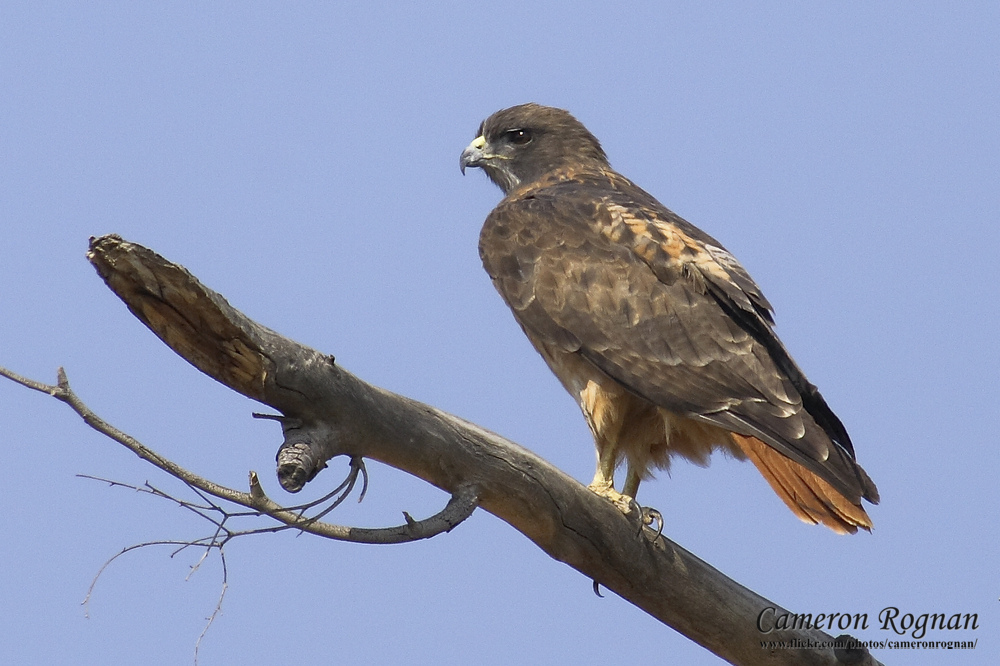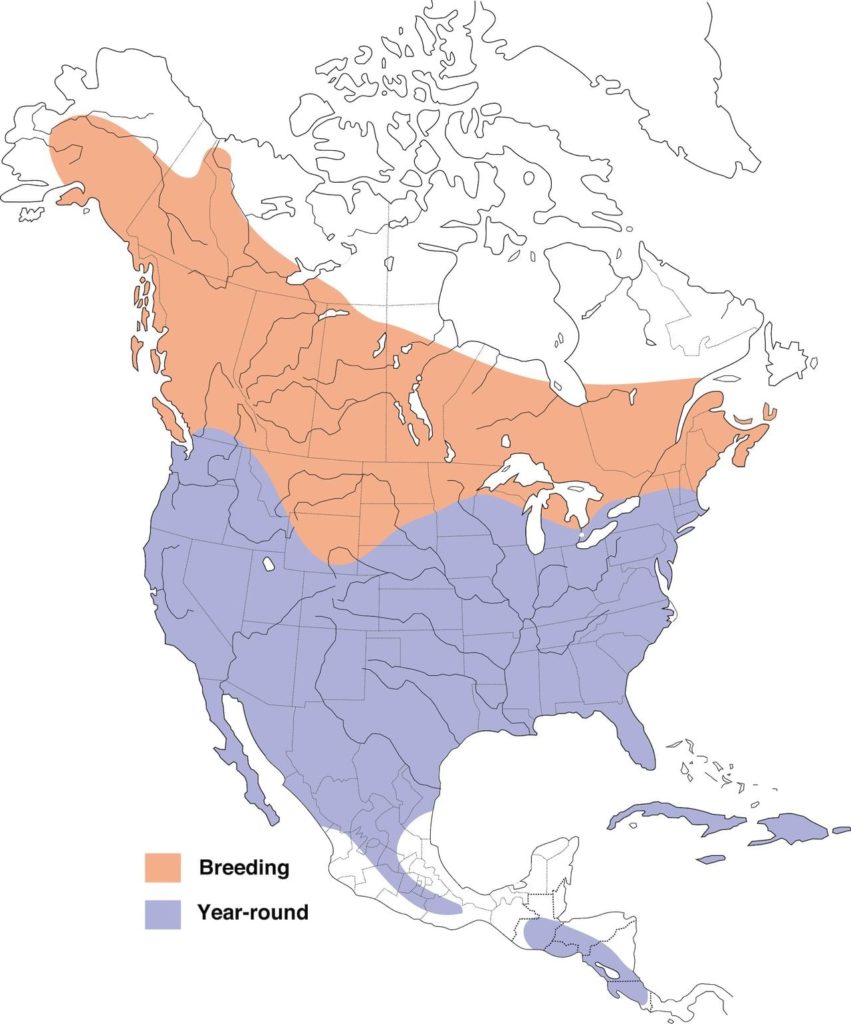Red-tailed Hawk
(Buteo jamaicensis)
The red-tailed hawk is the most common, most widely distributed and best known of all hawks in North America. It is a large, stocky hawk of woodlots, fields, alpine meadows, prairies and roadsides all across the the nation — the classic buteo. In Utah it is the only year-round resident broad-winged hawk. Because of this and its abundance it is probably the most likely hawk that you will see at any time of the year. It is also the hawk you are most likely to hear. Its call, the familiar high-pitched, downward-slurred kree-e-e-e-e scream reminiscent of a squealing pig, is the hawk call heard in practically every Hollywood western that’s been made.
The red-tailed hawk is highly variable in its coloration, however, sometimes making positive identification of the species difficult. In western North America there are three different color phases — a light phase, a red-phase, and a melanistic, or dark phase. Interbreeding between color phases complicates things by resulting in a broad range of intermediates. Red-tails do have a few specific distinguishing features that can be used to aid in their identification as they soar overhead.
As their name implies, red-tailed hawks have a reddish cinnamon or rufous-colored tail with a thin black band near the edge, but only as adults. Immature birds have finely barred brown tails that show white at the base. In addition, the tails of the immatures are longer than those of the adults.
In lighter and reddish phases, a distinct dark band running across the belly of the red-tail is a strong indicator of the species. Also, two features on the undersides of the wings, a set of bold “commas” located on the wrist or carpal area of each wing and a thick, dark line running along the leading edge of the arm (patagium), aid significantly in identification.
Red-tailed hawks are highly versatile and adaptable birds. They have been able to acclimate well to a world changed by people. For example, agricultural practices which cleared unuseable dense forests created open fields for foraging and telephone poles stretching across the landscape provided excellent perches for hunting. As hunters, they are consummate opportunists, feeding on any furred, feathered, or scaled creature that is smaller than a groundhog, although rodents are the mainstay of their diet. Perhaps if you watch for a while you’ll see one stooping for a meal.
The red-tailed hawk is the most common bird of prey in the Red Cliffs Desert Reserve, and may be observed year-round in all habitat types.

